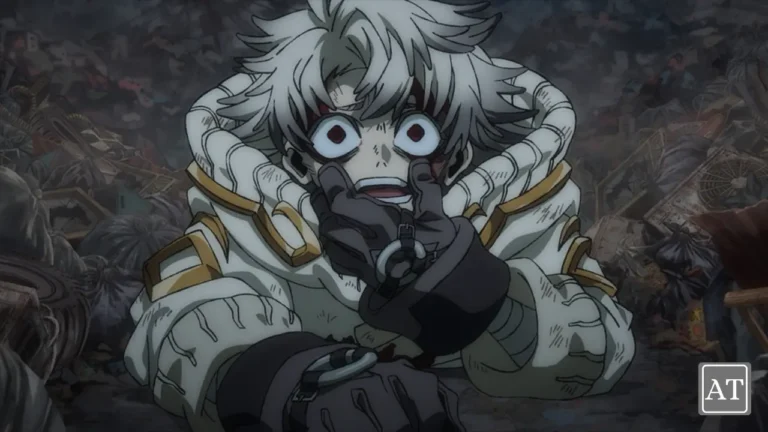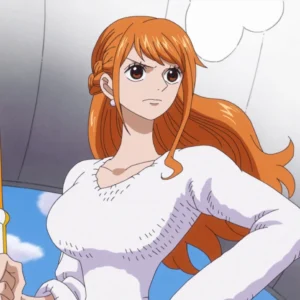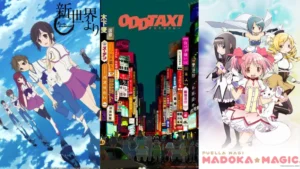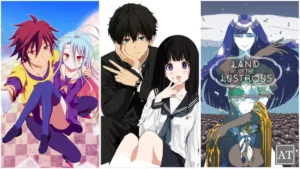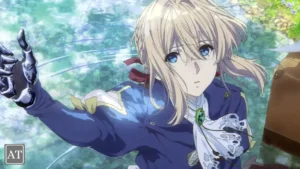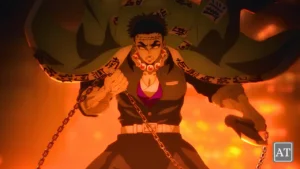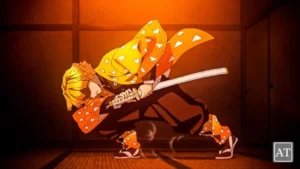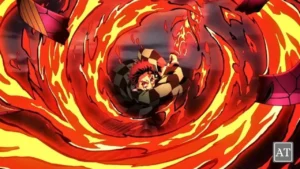In Gachiakuta, a spotless sky-city dumps its unwanted people and junk into a reeking garbage ocean called The Pit. Sixteen-year-old Rudo—framed for a crime he never committed—lands among the trash monsters, only to join the Cleaners, graffiti-wielding heroes who turn broken objects into living weapons. It’s a neon-splattered reminder that what the world calls “trash” can still shine—people included.
We’ve All Felt Thrown Away—The Magnetic Intro
Have you ever stared at an overflowing trash can and wondered where it all really goes? Or worse—felt like you were the thing somebody tossed out? Rudo sure has.
Imagine falling through clouds of rotting banana peels, busted smart-phones, and society’s sins until you splash down on a mountain of junk. Welcome to Trash-Punk—a rebel cousin of cyber-punk where neon circuits are swapped for spray-painted refrigerators and makeshift swords.
Gachiakuta grabs that primal nightmare of abandonment, then answers with a rallying cry: turn garbage into greatness.
The Sphere vs. The Pit: Two Worlds, One Unfair Chute
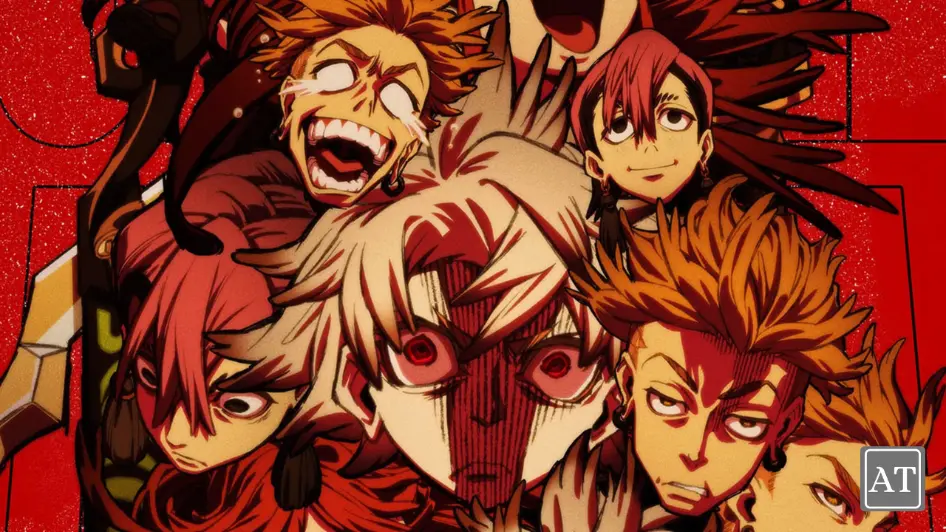
Life in the Sphere—Floating Streets Paved With Privilege
High above the smog hovers The Sphere, a utopia for the elite. Think marble balconies, air-trams, holographic billboards showing spotless shoes—then swipe left to the secret back-alley where guards drag bags marked “bio-hazard: criminal.” Citizens blithely believe throwing away problems makes them vanish.
As a kid, I once hid my broken Tamagotchi under the carpet, convinced Mom would never notice. Spoiler: she stepped on it. The Sphere is that childhood delusion scaled to a civilization.
The Pit—Endless Ocean of Garbage, Monsters & Givers
Down below sprawls The Pit—a post-apocalyptic skate park made of refrigerators, tires, and regrets. The stench? Picture wet dog food, burnt plastic, and teenage gym socks having a rave. But it’s also weirdly alive. Trash congeals into kaiju-like trash-beasts. Surviving here means scavenging and weaponizing what the upper crust discarded—kind of like using your ex’s hoodie as the world’s coziest armor.
Meet the Cleaners—Graffiti Knights of the Wasteland
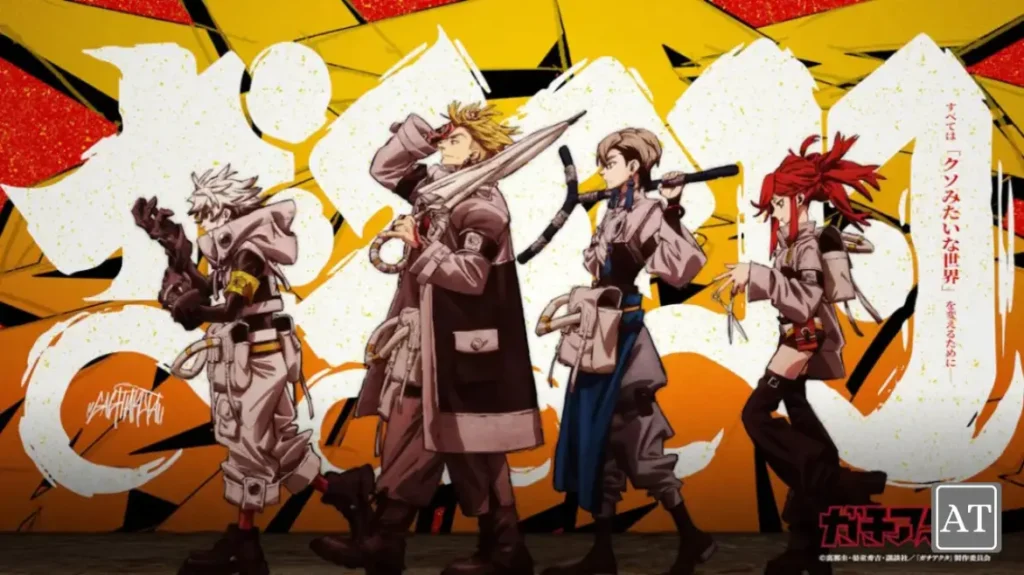
If Robin Hood started a street-art guild, you’d get the Cleaners. Led by the charismatic Enjin, they patrol debris fields, slay trash-beasts, and protect surface settlements. Their HQ looks like an abandoned skate shop splashed with neon tags courtesy of graffiti artist Ando Hideyoshi, whose real-life doodles inject vivid authenticity into the manga’s panels.
Vital Instruments: Turning Broken Stuff Into Battle Gear
Each Cleaner carries a vital instrument—a cherished object that unlocks supernatural might once “tuned” with the owner’s emotions. Rudo’s is a battered wrench gifted by his late foster dad. It’s as if your childhood Game Boy suddenly fired energy blasts because you believed in it hard enough. Rad, right?
How Givers Channel Aura From Junk
Individuals capable of awakening instruments are called Givers. They channel latent aura swirling in the Pit, fusing it with their artifact’s backstory. Think of aura like Wi-Fi in a landfill—everywhere but only a few know the password.
Rudo’s Journey From “Trash” to Treasure—Why His Story Resonates
Rudo’s origin is heartbreakingly universal: the moment adults label you “useless.” Falsely accused of murder, he’s hurled into the Pit wearing shackles and fury. Yet instead of rotting, he forges purpose—kind of like repotting a wilting plant and watching it bloom rebellious red flowers.
His first victory against a trash-beast is messy: dents in metal, blood on rusted swings. But as he grips his wrench, Rudo whispers, “I’m not throwaway.” That single line hit me harder than an overdue rent notice.
Graffiti Aesthetics—Ando Hideyoshi’s Colors of Chaos

Creator Kei Urana draws dynamic anatomy, but it’s Hideyoshi’s graffiti overlays—splattered pink “X”s, feral bubble letters—that make Gachiakuta pop like a can of shaken soda. In a recent interview, Hideyoshi said graffiti “embeds colours and freedom,” giving pages a rebellious, almost musical rhythm.
Try tracing one panel with your finger on a tablet—the paint drips feel wet, alive, daring you to scribble on your own walls (please get parental consent).
Big Ideas Hiding Under the Junk
Environmental Wake-Up Call
The Pit is our real-world landfill nightmare dialed to eleven—an implicit “How’s that single-use plastic habit going?” Earth Day suddenly feels too small.
“Throwaways” & Class Warfare
Gachiakuta hammers home that societies often label the poor, disabled, or criminalized as refuse. The Sphere residents literally flush people instead of facing systemic rot. Sound familiar?
Found-Family Feels in a Dumpster Fire World
Beyond explosions, the manga celebrates chosen kinship. Rudo’s team patches wounds with duct tape and dad jokes. If you’ve ever felt safer with friends than with blood relatives, you’ll vibe.
Final Sweep—Why Trash-Punk Might Just Save Your Inner Kid
Gachiakuta isn’t merely another shōnen fight-fest. It’s a mirror made of smashed CD shards reflecting our casual wastefulness—and a pep-talk telling each of us we’re reclaimable. Next time someone calls your idea “garbage,” smile and think of Rudo spinning landfill metal into a legend.
Because in the right hands, trash becomes art, pain becomes power, and discarded souls become heroes.
FAQs
Q1. Is Gachiakuta appropriate for younger readers?
A: It’s rated Teen for gritty violence and language. Parents might preview Volume 1 first.
Q2. What exactly is a “vital instrument”?
A: A personal object—say, a wrench or sneaker—bonded to its owner’s emotions, granting supernatural abilities.
Q3. Do I need to read the manga before the anime?
A: Nope! The anime will cover early arcs. Reading adds depth but isn’t mandatory.
Q4. How often does the manga release new chapters?
A: Weekly in Shōnen Magazine, with occasional breaks when the author needs rest (self-care matters!).
Q5. Is “trash-punk” an official genre?
A: Not formally—fans coined it to describe Gachiakuta’s graffiti-soaked dystopia, fusing post-apocalyptic grit with rebellious street art.

